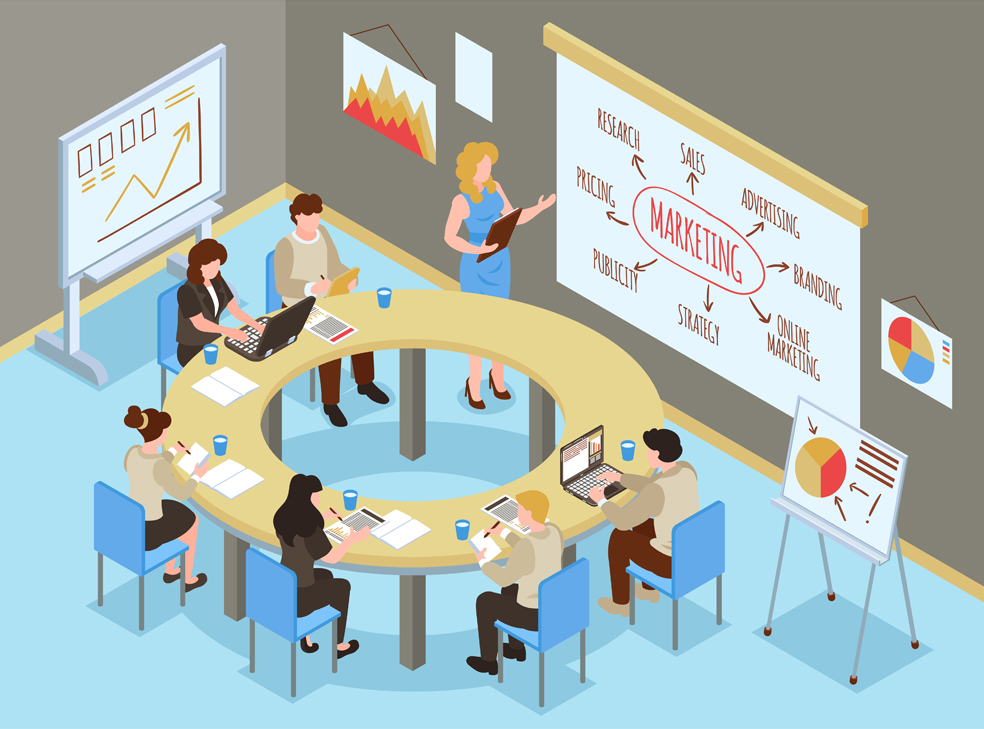Setting up a business learning environment: tips and strategies
Employee development is essential in any business operation. In fact, human capital plays a significant role in the growth of a company. This is why it’s important to ensure that employees are up to speed with trends and skills needed in a constantly evolving business environment.
An effective learning program for employee training and development must be put in place to ensure that they remain engaged, motivated, and committed to achieving the goals of the organization.

Today’s business learning environment is dynamic and constantly changing. With remote work and a growing international team becoming more common in many workplaces, there has never been a better time to recognize the importance of creating a learning environment.
But this requires an understanding of your current learning and development scenario and how to make changes to it that match the learning needs of employees.
Here are 9 tips and strategies for setting up an ideal business learning environment.
SETTING UP A BUSINESS LEARNING ENVIRONMENT
Provide personalized and individual learning.
Learners have different styles, needs, and methods for learning. Therefore, training programs should not be a one-size-fits-all approach. To provide a stimulating business learning environment, the organization must allow for a personalized form of learning.
Develop learning content that will encompass these differences in learning style, needs, and methods. Provide opportunities for individual learning by allowing the learners to set up their own personal goals and objectives, targets, and milestones.
Break down lessons into smaller chunks of information.
Instead of long, comprehensive modules, provide bite-sized information which learners can absorb more easily. Microlearning provides a more focused way of learning as it allows participants to understand specific topics and enables them to tick off actionable goals. Smaller pieces of information can also feed personalized learning, providing more flexibility for learners to go about the lesson at their own pace and style.
Build up a strong feedback mechanism.
Coaching and feedback are essential elements in corporate learning. Most learners in today’s world require assessment on how they are doing, especially with more complex subject matters. Learning programs that provide consistent, regular feedback empower learners to improve and correct any misunderstanding of a lesson.
Establish the relevance of the course.
Learners are more likely to understand the course with ease when they appreciate how it will be relevant in their daily functions. Ensure that the learning program objectives are linked to how they can do better in their roles and responsibilities. Incorporate the subject matter into practical application and allow the learners to apply what they learned immediately.
Enable collaboration
While individual learning is important, interaction with peers can foster teamwork and collaboration. A dynamic environment that provides colleagues with the opportunity to utilize each other as a learning resource can help set up an ideal business learning environment. Sharing insights, best practices, challenges, and examples with fellow learners can provide a stimulating learning experience. Involve coaches, supervisors, managers, a facilitator, and coaches in both the development of the course and in some of the learning modules.
Cater to various learning styles and characteristics
Learners have multiple styles and characteristics. For example, visual learners may prefer text and images, even video content. Others may learn more easily with audio content. Some learn by doing. When building a training course, consider the various learning styles and characteristics of participants. Provide a holistic learning experience by incorporating various formats. Get to know the learners, their needs, and styles – let this feed into the content and development of the training program.
Furthermore, ask yourself – are the participants comfortable with the use of technology? Can they easily adapt to new tools and applications? What are the demographics of the participants? Are they all from the same or varying geographic locations and culture? The answers to these questions will provide insights as to what an ideal business learning environment should look like.
Incorporate existing content and materials.
Sometimes, resources and materials already familiar to learners will help them understand the learning program better. Use existing content to lessen the friction from learning. Familiarity with content can inspire insights into how the lessons can be applied in real-life scenarios. Use existing tools, systems, and applications to eliminate the learning curve (not to mention added costs from purchasing new ones). The closer the learning environment is to the participants’ everyday work setting, the easier it will be to facilitate learning.
Utilize multimedia tools.
Your learning program does not have to be plain text. In fact, you can provide more engaging and interactive content through videos, animations, and simulations to spruce up your training program. Incorporate interactive quizzes and feedback mechanisms. Get samples (and even memes) from social media to inject some fun and relatable content into lessons. Finally, align your content with tools, systems, applications, and technologies that the participants tend to use in their day-to-day role.
Consider incentives.
Nothing motivates people more than rewards. Consider providing incentives to build excitement and commitment towards the program. Explore the use of badges, competition, company-wide recognition, scholarships, career pathing, even monetary incentives to motivate participants to complete the learning program.
What’s next?
Learners can grow and benefit from an environment that allows for a rich and stimulating learning experience, one that offers abundant learning opportunities. The right learning experience and training program for employees boosts engagement and increases retention. It empowers employees who are newly hired or even those recently transferred from other departments.
A Learning Management System enables you to offer a structured and tailored learning environment for employees that makes them successful.
Edubrite LMS can help you with employee training and with setting up a business learning environment. Book a demo with us today.
